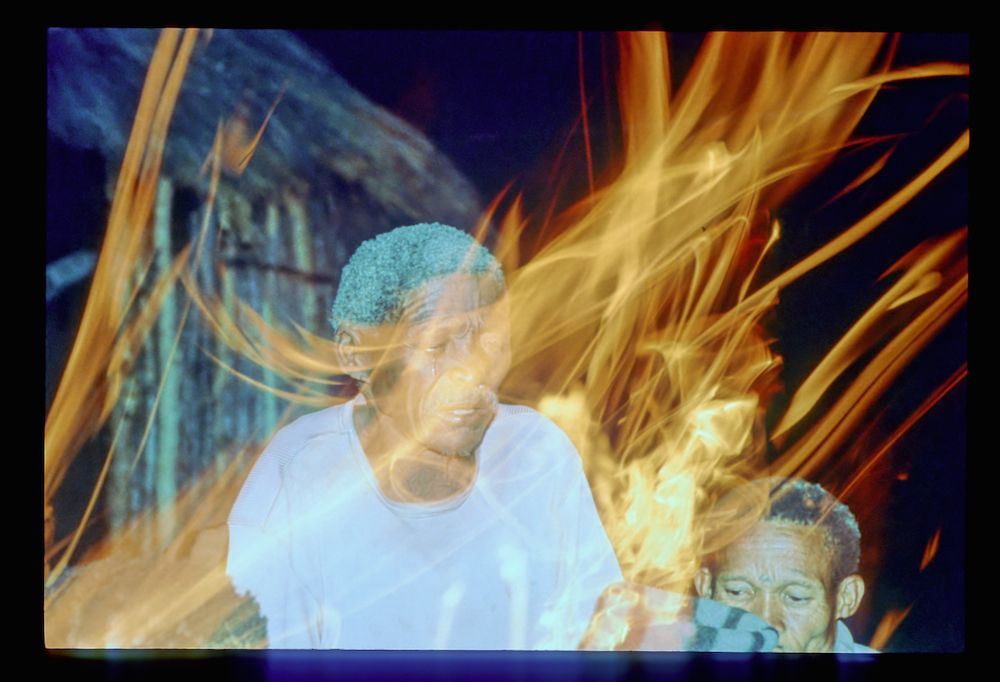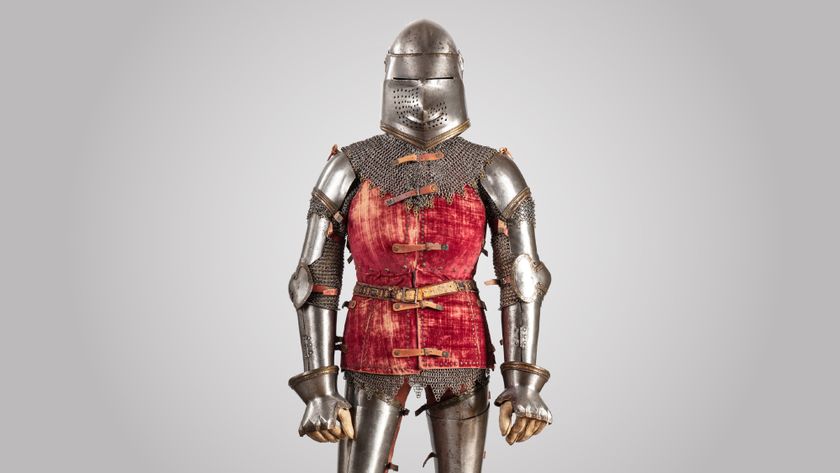Campfire Tales Served as Early Human Social Media

Telling stories around a campfire may have served as one of the first forms of "social media," helping humans create and spread culture, reports a new study on the Kalahari Bushmen in Africa.
These firelight tales, rarely told during the day, can reinforce social traditions, encourage harmony and equality, and create a sense of community when the stories tell of people living far away or in the spirit world, the researchers added.
"At night, things mellow out," said the study's author, Polly Wiessner, a professor of anthropology at the University of Utah in Salt Lake City. "They go into talking about stories. They sing and dance. They recall partners in other places." [See Images of Kalahari Bushmen During Campfire Tales]
Wiessner began recording conversations among the !Kung bushmen as a graduate student in the 1970s. The !Kung, also known as Ju/'hoansi Bushmen, consist of about 3,000 members living in the Kalahari Desert of northeast Namibia and Botswana. (The exclamation point, slash and apostrophe signify clicks in the bushmen language, Wiessner said in a statement.)
In the past, the Ju/'hoansi Bushmen foraged for food. Their ways changed in the mid-1970s as they settled into villages. Nowadays, the bushmen still forage, but they also work for wages, sell crafts and breed animals.
Throughout 1974, Wiessner took notes on 174 day and nighttime conversations among the bushmen. Each conversation lasted between 20 and 30 minutes and involved five or more adults; Wiessner categorized each conversation by topic. The researcher returned to the Kalahari Desert in 1998, 2005 and 2013, recording 68 firelight stories, including tales about hunting trips, murders, marriages, births, getting lost and bushfires.
Fire-fueled talk
Sign up for the Live Science daily newsletter now
Get the world’s most fascinating discoveries delivered straight to your inbox.
The day and nighttime conversations were radically different, she found. When the sun was up, 34 percent of conversations involved complaints, criticisms and gossip, all of which are known to regulate social norms. Another 31 percent covered economic topics, such as foraging plans and hunting strategies; 16 percent comprised jokes; just 6 percent were stories, and the rest consisted of other matters, such as interethnic relations and land rights.
In contrast, 81 percent of conversations at night included stories, 7 percent involved complaints, and just 4 percent involved economic issues.
"It's a really nice paper, I must say," said Richard Wrangham, a professor of biological anthropology at Harvard University, who was not involved in the study. "The notion that there is this dramatic difference in what people talk about at the beginning and the end of the day is very striking. I don't know if anybody else has made this simple point."
The firelight storytellers recorded in the study did not worship heroes or moralize in their tales, but instead regaled listeners with narratives of culture and community, Wiessner said. These stories likely delivered unspoken lessons to friends and family, she said. The audience often participated, repeating the last words or phrases of a sentence and discussing details at the end of the talk. Some people were nearly in tears with suspense, or rolling with laughter during funny anecdotes, Wiessner said.
Stories are a part of almost all hunter-gatherer societies, and acted as the "original social media," Wiessner suggested. For instance, in 2012, three Ju/'hoansi tragically died in a bushfire. Their people traded details by day and told stories by night of the deaths, attributing the disaster to black magic from a neighboring community.
Stories also help the younger generation learn about traditions such as marriage ceremonies. "In a small group of 25 to 50 [people], you don't witness that many marriages," Wiessner said. "When you hear these stories, you get a sense for what the norm for cultural institutions is."
When Wiessner and colleagues looked for research on other hunter-gatherer groups on eHRAF (Human Relations Area Files) for World Cultures, they found that gossip was associated with daytime activities in 38 societies. Conversely, 60 hunter-gatherer societies in the database mentioned ceremonies by firelight that involved song, dance, healing, mourning and fertility, Wiessner said. [In Images: An Ancient European Hunter Gatherer]
"There's not much you can do at night," said Robin Dunbar, a professor of evolutionary psychology at the University of Oxford in the United Kingdom, who was not involved in the study. "But the argument is that one thing you can do is sit around the campfire talking and expand your social activities."
This shared social time helps create communities and social networks, Dunbar added. Of course, sometimes fighting and criticism carry over from the daytime and into the night, but the firelight period has a special meaning for social relationships, he said.
In modern society, much of this storytelling time is lost to electronic devices. "Turn off the switch on the television or the computer and get out and talk to people," Dunbar said. "It's better for you."
Dunbar added, "I can merely encourage people to take their headphones off when they're at the gym and talk to the guy next door when they're pumping iron."
The study was published online today (Sept. 22) in the journal the Proceedings of the National Academy of Sciences.
Follow Laura Geggel on Twitter @LauraGeggel and Google+. Follow Live Science @livescience, Facebook & Google+. Original article on Live Science.

Laura is the archaeology and Life's Little Mysteries editor at Live Science. She also reports on general science, including paleontology. Her work has appeared in The New York Times, Scholastic, Popular Science and Spectrum, a site on autism research. She has won multiple awards from the Society of Professional Journalists and the Washington Newspaper Publishers Association for her reporting at a weekly newspaper near Seattle. Laura holds a bachelor's degree in English literature and psychology from Washington University in St. Louis and a master's degree in science writing from NYU.










